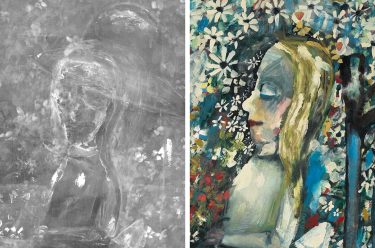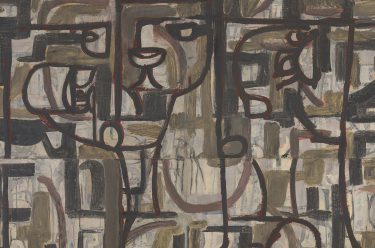In Sir Arthur Streeton’s The bathers 1891 the artist has painted a group of four boys swimming in a creek, however under infra-red light we see there were originally more figures.
Streeton (8 April 1867-1943) significantly contributed to the way Australia imagines itself, the romance and beauty of his landscapes reflects the vision for Australian art at the turn of the twentieth century, highlighting the importance of country in this nation’s experience.
Streeton was seen as the hero of an ambitious beginning for Australian art, one that assumed it could discard conventional European art styles.
I want to be painting every day . . . I picture in my head the Murray and all the wonder and glory at its source up toward Koscuisko [sic] . . . and the great gold plains, and all the beautiful inland Australia and I love the thought of walking into all this and trying to expand and express it in my way.1
While this ambition established new pictorial forms, its impetus for a national art never wholly discarded imported methods of responding to the landscape, especially aspects of European Romanticism.
Arthur Streeton ‘The bathers’ 1891

In The bathers 1891 (Illustrated), on display within the Queensland Art Gallery’s Australian Art Collection, Josephine Ulrick and Win Schubert Galleries (10-13), the boys swimming in a creek present a cultural archetype of Australians enjoying nature. Streeton, together with Tom Roberts, Frederick McCubbin, Charles Conder, Walter Withers and various non-artist friends, spent weekends and longer periods camping in locations around Melbourne, including Box Hill, Mentone and Eaglemont. It was during one of these trips that this work was painted.
Streeton and his friends were not the only ones journeying out of the cities to experience the unique Australian landscape. City-dwellers often travelled to the bush surrounding Melbourne to spend their leisure time picnicking, camping, sketching and painting. At the time, this relationship to the bush was seen as progressive, advancing the pursuit of a utopian existence.
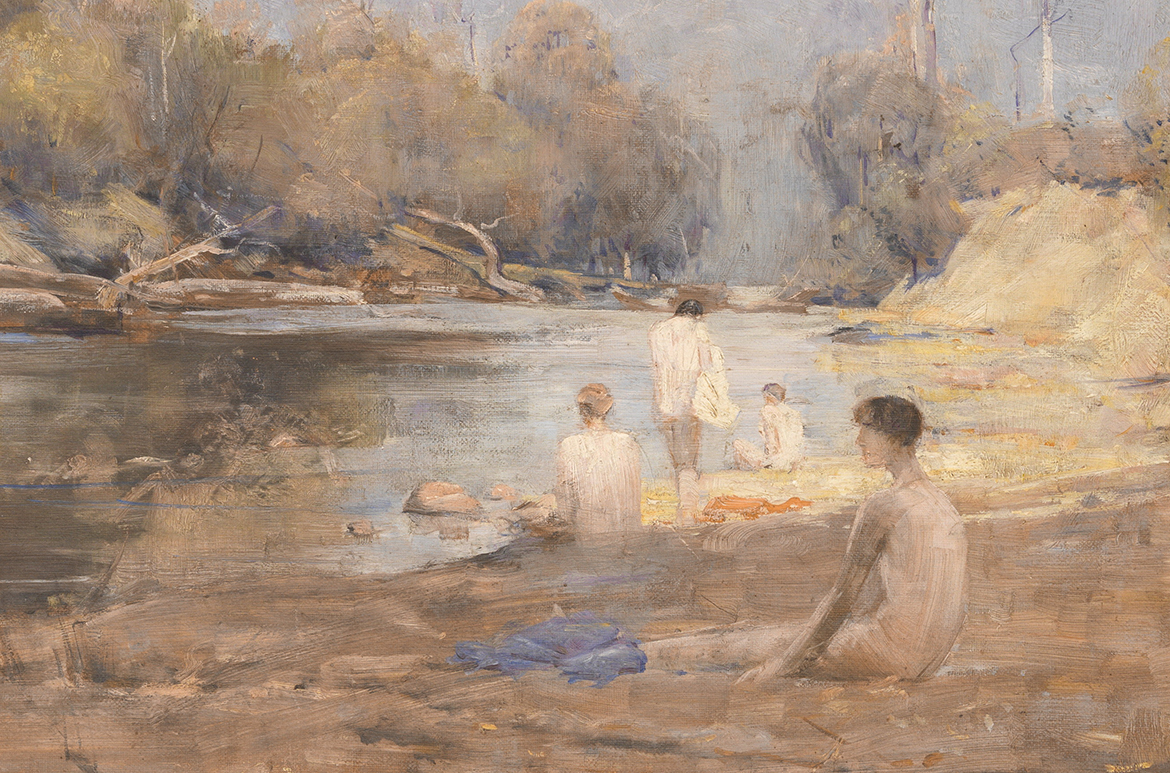
The depiction of nudes, especially male nudes, in the Australian landscape highlights aspects of European Romanticism in Streeton’s attitude to the bush. The nude figures are testament to a utopian experience of nature, of humanity in a harmonious relationship with the environment. In the same period, Streeton painted several nudes of women, but mostly as nymphs in mythical and allegorical situations, experimenting with popular symbolist subject matter. These boys possess no such lyrical fancy; they are skinny and pale and turned away from the viewer, not heroically posed like Classical figures.
Interestingly is the discovery by Gallery Conservators that, under infra-red light, another two figures are apparent, one standing to the right of the group (Illustrated) and one swimming in the water (Illustrated). Was the painting altered by the artist, perhaps as a result of moral objections to the nudity of the figures?
X-ray revealing the two altered areas
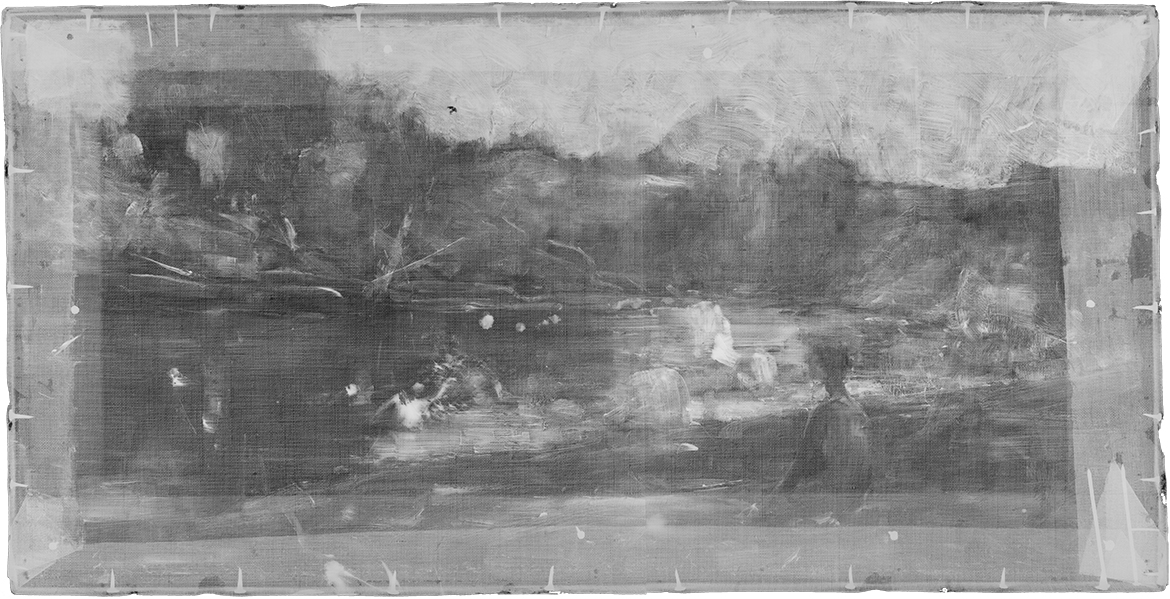
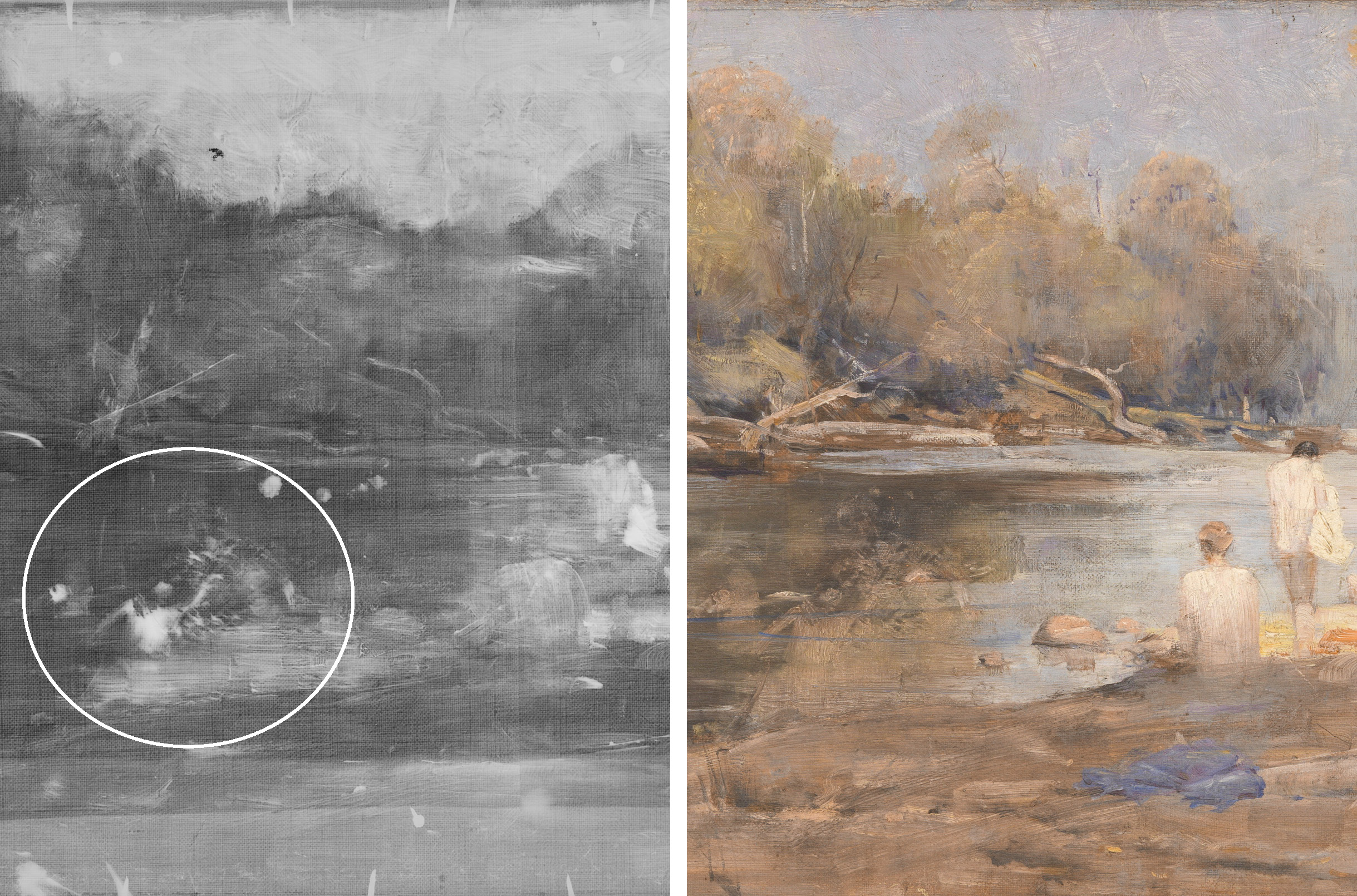
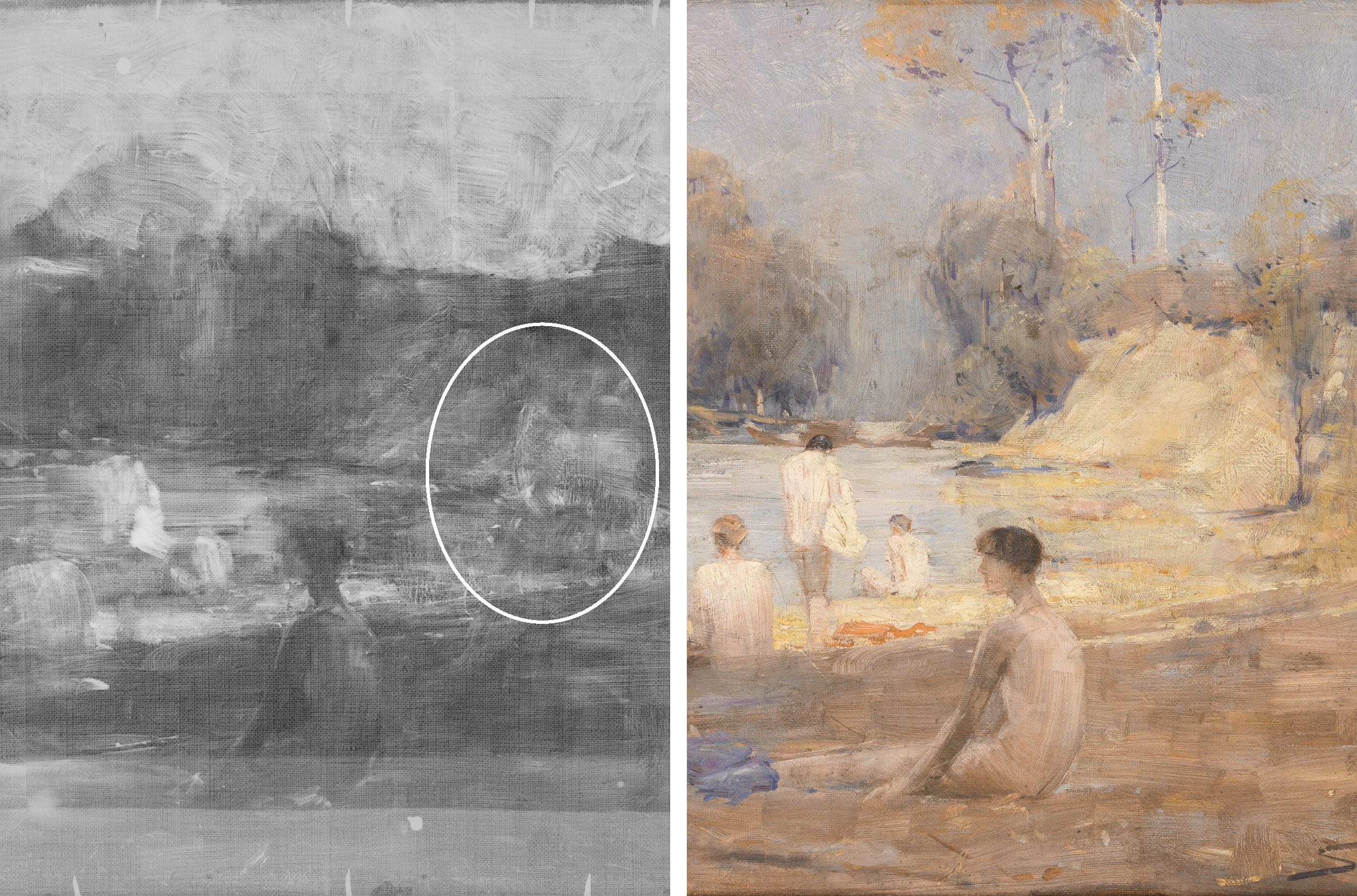
Edited excerpt by Angela Goddard, former Curator, Australian Art to 1975, QAGOMA
Endnote
1 Arthur Streeton, ‘Letter to Tom Roberts,’ 1891, in Letters from Smike: The Letters of Arthur Streeton 1890–1943, eds A. Galbally and A. Gray, Oxford University Press Australia, Melbourne, 1989, p.30.
#QAGOMA
